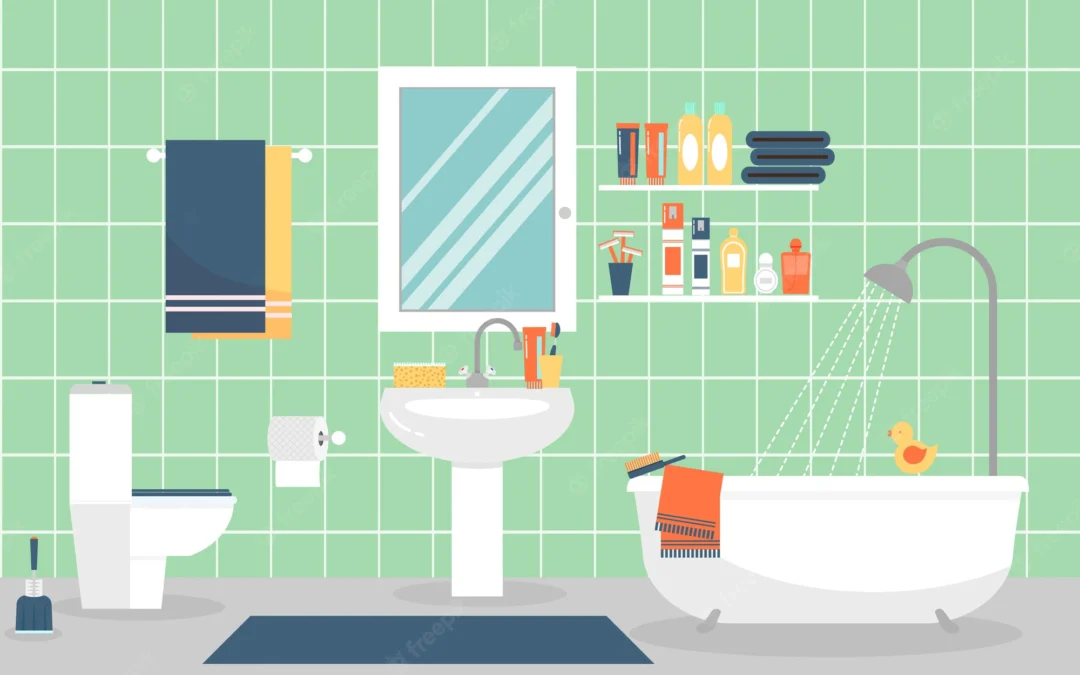One of the most used rooms in your home is the bathroom. Water is required for the operation of the bathroom fixtures. Plumbing is required for the operation of toilets, sinks, showers, and baths. Corrosion loosened connections, and damage grows more common as these fixtures age. Due to the volume of water and possible issues, bathrooms, on the other hand, are particularly vulnerable to water damage. Here are some suggestions from water damage restoration experts for preventing water damage in your bathroom.
Keep drains clean and clear- When drains get blocked or clogged, the flow of water is disrupted, resulting in overflow and flooding. Bathroom drain obstructions are frequently caused by soap scum, filth, and hair. You won’t be able to prevent these goods from draining, but you can assist reduce the amount that does. Drain shields and guards are low-cost items that go over the drain and filter what can and can’t go down it. They collect hair, soap scum, and filth so you can wipe them away rather than allowing them to build up and clog drains. It is advised that you clear your drains on a regular basis using a professional drain cleaner or a baking soda, vinegar, and hot water mixture. This will be accomplished by reducing the amount of buildup inside the drainpipe.
Do not overwork your toilet- Toilets are prone to clogging and overflowing, which is an annoying problem that no one wants to deal with. By being aware of how much you pour down your toilet, you may avoid the headache of toilet water cleanup. Examine your flushing habits to check whether you’re flushing anything other than toilet paper or if you’re flushing too much toilet paper. Sanitary wipes and other personal hygiene items should be discarded rather than flushed, as they may clog pipes. Also, keep an eye on the water level in your toilet. There might be a drainage issue somewhere if it’s too low or too high. Keep a watch on your little children to make sure they don’t flush anything.
Inspect your shower and tub regularly- Grout and caulk are necessary for securing fittings and preventing water from seeping out of showers and tubs and causing damage to your bathroom. Repair any caulk or grout that has been chipped, cracked, or deteriorated. To avoid leaks, you might consider reapplying caulk every few years. If there are any cracks or other areas of damage in your shower or tub, get it repaired. Keep buildup out of tubs and showers to avoid falling down the drain.
Check your plumbing regularly- Pipes corrode and rust with time, resulting in leaks. You should examine your pipes for any symptoms of leakage on a regular basis. Musty odors, water spots or stains, bubbling on walls, and warping on floors are all signs of water damage from leaking pipes. Check for leaks in the faucet supply lines beneath the bathroom vanities and the connections behind the toilet.
Inspections and maintenance of your bathroom on a regular basis will help you avoid costly water damage restoration and detect a problem sooner if one occurs. When water damage happens in your house, whether in the bathroom or elsewhere, water damage restoration should begin as quickly as feasible. White Glove Restoration is a water damage repair company that is available to help you 24 hours a day, 7 days a week.





